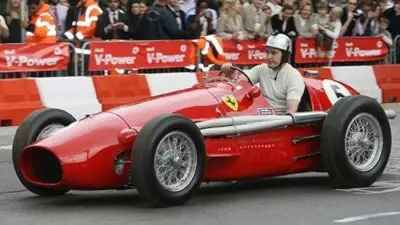The racetrack has long been more than just a venue for thrilling competition—it’s a laboratory where automotive excellence is born. For over a century, motorsports have pushed the boundaries of what’s possible in vehicle design, engineering, and performance. Racing technology has directly influenced countless innovations we now take for granted in everyday cars, from aerodynamic efficiency and handling improvements to advanced safety features and engine performance enhancements.

When drivers push their machines to the limit on circuits around the world, they aren’t just competing for trophies—they’re participating in real-world testing that accelerates automotive development. Technologies like disc brakes and paddle-shift transmissions first proved their worth in racing before becoming standard in consumer vehicles. Similarly, the intense focus on aerodynamic efficiency in motorsports has dramatically improved the fuel economy and stability of everyday cars.
The relationship between racing and consumer vehicles continues to evolve, with motorsports now driving innovations in environmental sustainability and electrification. As racing series embrace hybrid and fully electric powertrains, they create proving grounds for technologies that will eventually make their way to the vehicles in our driveways, demonstrating how competition on the track leads to progress on the road.
Key Takeaways
- Racing serves as a high-pressure testing environment that accelerates automotive technology development and transfers innovations to consumer vehicles.
- Advanced safety systems, improved aerodynamics, and efficient powertrains in everyday cars can trace their origins to motorsports competition.
- Modern racing is increasingly focused on sustainability and electrification, previewing the next generation of eco-friendly automotive technologies.
Historical Impact of Racing on Automotive Technology

Racing has been a driving force behind many automotive innovations that we now take for granted in everyday vehicles. The high-stakes environment of motorsport created perfect testing grounds for new technologies that later found their way into consumer cars.
Early Motorsport Contributions
The earliest motorsport competitions in the late 19th and early 20th centuries sparked significant automotive advancements. When cars first raced at events like the Paris-Rouen Trial in 1894, they rarely exceeded 12 mph. These primitive competitions quickly accelerated development of more powerful engines and reliable components.
Early race cars served as testing grounds for new ideas that revolutionized automotive design. Key innovations included:
- Overhead valve engines (1912): First used in racing before becoming standard in production cars
- Rearview mirrors: Introduced at the 1911 Indianapolis 500
- Independent suspension systems: Tested in Grand Prix racing in the 1920s
- Four-wheel hydraulic brakes: Developed through racing before widespread adoption
These developments fundamentally changed how cars were built and performed, creating the foundation for modern automobiles.
Racing to Road: Technology Transfer
The post-World War II era saw acceleration in technology transfer from racing to everyday vehicles. Formula 1, Le Mans, and other prestigious racing series drove innovations in multiple areas of automotive engineering.
Disc brakes, first used in the 1950s at Le Mans, later became standard safety equipment in production vehicles. Aerodynamic improvements tested on racetracks significantly enhanced fuel efficiency and stability in consumer cars.
Racing fostered innovation in materials science as well. Lightweight components like carbon fiber, initially developed for motorsport, now appear in many production vehicles to improve efficiency and performance.
Engine technologies including turbocharging, fuel injection, and variable valve timing all saw development in racing before becoming commonplace in everyday vehicles. These advancements improved both performance and efficiency in consumer automobiles.
Motorsports as a Catalyst for Technological Advancement

Racing competitions serve as powerful innovation hubs where extreme conditions push engineering limits. These high-stakes environments demand solutions that later transform everyday vehicles.
Formula 1 Innovations
Formula 1 stands at the forefront of automotive innovation, with teams investing hundreds of millions annually in research and development. This elite racing series has pioneered numerous technologies now common in passenger vehicles.
Carbon fiber composites, first adopted in F1 in the early 1980s, revolutionized car construction by providing superior strength-to-weight ratios. Today, these materials appear in premium production cars, enhancing safety and efficiency.
F1’s development of advanced aerodynamics has transformed how production vehicles manage airflow. Technologies like active suspension systems, semi-automatic transmissions, and energy recovery systems (KERS) all made their debut in F1 before reaching consumer automobiles.
Telemetry systems that monitor hundreds of parameters in real-time during races have influenced modern vehicle diagnostics. Even hybrid powertrains in consumer vehicles benefited from F1’s push toward fuel efficiency without sacrificing performance.
IndyCar Engineering Breakthroughs
IndyCar racing has contributed significantly to safety innovations and engine efficiency. The series’ unique combination of oval tracks and road courses creates diverse engineering challenges.
Crash barriers and impact-absorbing structures developed for IndyCar have improved passenger vehicle safety. The SAFER (Steel And Foam Energy Reduction) barrier, initially designed for oval racing, has influenced roadside safety barriers worldwide.
Fuel delivery systems optimized in IndyCar competition have enhanced engine efficiency in production vehicles. These systems precisely meter fuel under extreme conditions, improving both performance and economy.
IndyCar’s work with alternative fuels and electrification has accelerated the development of greener technologies. The series now uses renewable ethanol fuel, helping push sustainable fuel adoption in regular vehicles.
NASCAR’s Influence on Automotive Design
Despite its reputation for traditional technology, NASCAR has made substantial contributions to automotive safety and durability. The series’ extreme conditions test components to their limits.
NASCAR’s roll cage designs have influenced structural safety in production vehicles. While not directly transferred, the principles behind these protective structures inform passenger vehicle safety cells.
Tire technology developed for NASCAR’s grueling oval races has improved consumer tire durability and performance. Racing tire compounds developed to withstand extreme heat and stress cycles have found their way into everyday tires.
Engine cooling systems tested in NASCAR’s high-temperature environment have enhanced reliability in production vehicles. These innovations in thermal management help everyday engines operate more efficiently under various conditions.
Fuel efficiency improvements, despite NASCAR’s high-consumption reputation, have influenced production vehicle development through advanced engine mapping and combustion optimization techniques.
Real-Time Data and Performance Analytics

Racing teams now leverage millions of data points captured during races to make split-second decisions. These analytics systems transform raw information into actionable insights that improve both race performance and everyday driving technologies.
Data Acquisition Systems in Racing
Modern race cars are equipped with sophisticated sensors that monitor every aspect of vehicle performance. In Formula 1, each car contains over 300 sensors generating data on everything from tire temperature to engine performance. These systems transmit information wirelessly to team engineers in real-time.
Teams use this data to make critical race strategy decisions within seconds. For example, pit stop timing is often determined by analyzing tire wear patterns against current track conditions.
The technology isn’t limited to high-end racing. Even amateur motorsports now utilize basic telemetry systems that track:
- Speed and acceleration
- Braking points and intensity
- Engine parameters
- Driver inputs (steering, throttle, brake)
This real-time analytics capability helps drivers improve their technique by identifying precisely where they’re losing time on track.
Impact on Vehicle Safety and Performance
The data revolution in racing has dramatically improved safety standards across motorsports. By analyzing crash data, engineers develop better protective structures, restraint systems, and impact-absorbing materials.
This racing-derived safety technology regularly transitions to consumer vehicles. Features like crumple zones and advanced restraint systems were refined through racing analysis before becoming standard in passenger cars.
Performance improvements follow a similar path. High-performance data visualization helps racing teams identify inefficiencies that, once solved, often benefit everyday vehicles.
For instance, driver safety and vehicle performance improvements developed through racing analytics have led to more fuel-efficient engines and better handling characteristics in consumer cars.
The automotive industry continues to benefit from this racing-to-road technology transfer. Developments in traction control, stability systems, and even hybrid powertrains all evolved faster due to competitive motorsport testing and data analysis.
Advancements in Energy Efficiency and Propulsion

Racing has become a crucial testing ground for innovations in energy efficiency and propulsion technologies. Engineers have leveraged motorsports to develop cleaner, more efficient power systems that eventually make their way into everyday vehicles.
Hybrid and Electric Vehicles in Racing
Formula E emerged in 2014 as the first fully electric racing series, creating a platform specifically for testing and improving electric vehicle technology. This championship has attracted major manufacturers like Porsche, Jaguar, and Nissan who use the competition to develop more efficient electric motors and battery systems.
The introduction of hybrid systems in Formula 1 in 2009 (KERS) and more comprehensive hybrid power units in 2014 marked a significant shift toward efficiency in the sport. These racing hybrids have directly influenced production vehicles.
Many innovations in battery life and electric motor efficiency developed for racing are now being implemented in consumer electric vehicles, improving range and performance.
Energy Recovery Systems
Energy Recovery Systems (ERS) represent one of racing’s most valuable contributions to automotive efficiency. These systems capture energy normally lost during braking and convert it to usable power.
Formula 1’s sophisticated ERS can recover energy from both kinetic (braking) and thermal (exhaust) sources, storing it in batteries for later deployment. This technology has helped reduce fuel consumption in F1 cars by over 30% since 2014.
Precision fuel injection systems developed for racing engines have dramatically improved combustion efficiency, reducing emissions while increasing power output. These systems now appear in virtually all modern production vehicles.
Aerodynamic innovations from racing have also contributed to efficiency by reducing drag and improving airflow, helping vehicles use less energy to maintain speed.
Material Sciences and Vehicle Dynamics

Racing has revolutionized automotive materials and dynamics, creating a competitive laboratory for advancements that eventually benefit everyday vehicles. The constant pursuit of speed and safety in motorsports has accelerated innovations in lightweight materials and improved how cars handle under extreme conditions.
Evolution of Composite Materials
The transition from traditional metals to advanced composites marks one of racing’s most significant contributions to automotive development. Early race cars relied heavily on steel and aluminum, but today’s vehicles utilize carbon fiber composites that offer superior strength while dramatically reducing weight.
Formula 1 pioneered many composite applications, developing carbon fiber monocoques in the 1980s that revolutionized safety and performance. These materials absorb crash energy more effectively than metal counterparts.
Racing teams continuously test new composite formulations under extreme stress conditions. Materials that succeed on the track often appear in production vehicles years later, following a proven path from motorsport to consumer cars.
Modern hypercars now feature full carbon fiber chassis, directly inheriting technology from racing development programs.
Improving Power-to-Weight Ratio
The pursuit of speed in motorsports has made power-to-weight ratio a critical focus. Engineers constantly balance adding power while reducing vehicle mass to achieve optimal acceleration and handling.
Racing teams employ sophisticated materials like titanium, magnesium alloys, and carbon composites to shave critical grams from components. Even bolts and fasteners undergo weight optimization using exotic materials and designs.
Engine components benefit from racing-derived lightweight materials. Ceramic bearings, titanium connecting rods, and aluminum-lithium alloys have all migrated from racing engines to high-performance production vehicles.
Aerodynamic elements made from composites add downforce without significant weight penalties. This approach enables race cars to maintain stability at high speeds while preserving their power-to-weight advantage.
The lessons learned from this obsessive weight reduction eventually influence production vehicle design, improving fuel efficiency and performance for everyday drivers.
Sustainability and Eco-Friendly Innovations

Racing has become a powerful testing ground for sustainable technologies that later make their way into everyday cars. These innovations address environmental concerns while maintaining the excitement of motorsport competition.
Green Racing Initiatives
Sustainability in motorsports involves integrating environmentally friendly practices and technologies into racing events. Series like Formula E exclusively use electric vehicles, showcasing zero-emission racing at high speeds.
The Green Racing Protocols have transformed how the automotive industry approaches motorsport. These guidelines encourage teams to develop cleaner fuels, more efficient engines, and reduced carbon footprints.
Many racing organizations now implement carbon offset programs and renewable energy at their facilities. Formula 1’s commitment to being carbon neutral by 2030 demonstrates the industry’s shift toward sustainability.
Racing’s Role in Sustainable Automotive Development
Motorsport serves as a laboratory for clean technologies that eventually benefit consumer vehicles. Racing’s competitive nature pushes engineers to develop more efficient electric drivetrains, advanced battery systems, and regenerative braking technologies.
Eco vehicle racing combines excitement with environmental responsibility, pushing boundaries of green technology. The extreme conditions of racing provide rigorous testing that accelerates development cycles.
Sustainable materials like natural fiber composites are being tested in racing before becoming mainstream. Companies like Bcomp create lightweight, renewable alternatives to carbon fiber for racing components.
Electric vehicle manufacturers use motorsport to demonstrate performance capabilities, helping overcome consumer concerns about power and range limitations in everyday electric vehicles.
Industry Partnerships and Collaborations

Automotive racing serves as a catalyst for innovation through strategic partnerships that bridge competition and technological advancement. These collaborations create mutually beneficial relationships where expertise and resources flow between racing teams and manufacturers.
OEM and Racing Team Alliances
Original Equipment Manufacturers (OEMs) form powerful alliances with racing teams to test technologies in extreme conditions. Ford’s partnership with Team Penske and Toyota’s connection with Joe Gibbs Racing exemplify these relationships that accelerate innovation in the automotive industry.
Companies like Aisin, a major automotive parts supplier, partner with racing teams to develop and test transmission systems that eventually find their way into production vehicles. These partnerships allow engineers to push boundaries in real-world competition settings.
The data collected during races provides invaluable feedback for improving production vehicles. For example, brake cooling systems tested in endurance racing often influence consumer vehicle designs within 2-3 development cycles.
Technology Sharing Agreements
Formal technology sharing agreements enable the flow of innovations between racing and consumer vehicles. These agreements specify which technologies can transfer between domains and how intellectual property is managed.
Chemical companies like Dow contribute specialized materials that improve fuel efficiency and vehicle durability. Their lightweight composites, tested in racing environments, later appear in mass-produced vehicles.
Materials technology transfers have been particularly successful, with racing-derived carbon fiber components now common in premium consumer vehicles. These materials reduce weight while maintaining strength—a critical factor in both racing and everyday fuel efficiency.
Strategic partnerships drive success by creating ecosystems where innovation can flourish across organizational boundaries. Companies share risks and rewards while accelerating technological advancement beyond what any single entity could achieve alone.
Global Motorsports and Their Influence on Local Markets

Motorsport events around the world do more than entertain fans—they drive innovation and economic growth in their host regions. These high-profile racing series create ripple effects that touch everything from local tourism to consumer vehicle development.
Diverse Racing Formats and Regional Impacts
Formula One, MotoGP, and regional racing series each bring unique economic benefits to their host locations. When international races come to town, they create temporary employment spikes and attract thousands of visitors. For example, a single F1 weekend can generate millions in local spending on accommodations, dining, and entertainment.
Infrastructure investments for racing facilities boost local economies by creating jobs and attracting international tourists. These benefits extend beyond race weekends, as facilities often host year-round events.
Countries like Singapore and Abu Dhabi have used F1 races to enhance their global image and tourism appeal. Local businesses typically see 15-30% revenue increases during race weekends.
The economic impact varies by region—European traditional circuits like Monza drive heritage tourism, while newer Asian venues focus on cutting-edge technology displays.
Motorsports’ Effect on Automotive Trends
Racing competitions serve as real-world laboratories where manufacturers test innovations before introducing them to consumer vehicles. Many features in today’s cars originated on racetracks.
Aerodynamic efficiency, improved handling and engine performance technologies developed for racing regularly transfer to everyday vehicles. These improvements make consumer cars safer, more efficient, and better performing.
Motorsports has become a crucial platform where carmakers and suppliers test new technology before implementing it in road cars. Racing-derived innovations include:
- Advanced safety features like crash structures
- Lightweight materials (carbon fiber, aluminum alloys)
- More efficient engine designs
- Improved braking systems
- Hybrid and electric powertrain development
Companies with racing heritage often leverage their motorsport participation in marketing strategies, creating strong brand identities that influence consumer purchasing decisions.
Future of Racing and Predictions for Automotive Technology

Racing technology continues to push boundaries and shape our everyday vehicles. The innovations we see on racetracks today often become standard features in consumer vehicles within a decade, creating a pipeline of technological advancement from competition to commuting.
Next-Generation Racing Technologies
The racing world is rapidly embracing electrification, with hybrid engines becoming increasingly prominent in motorsport. Formula E has proven electric racing can be exciting, while Formula 1’s hybrid power units demonstrate remarkable efficiency gains.
Aerodynamic innovations continue to evolve, with computational fluid dynamics (CFD) allowing teams to test hundreds of designs virtually before production. These advances directly influence road car efficiency and range.
Materials science plays a crucial role too. Carbon fiber composites, once exclusive to racing, now appear in mainstream vehicles. The next frontier includes graphene and other nanomaterials that promise extraordinary strength-to-weight ratios.
Data analytics and AI have transformed racing strategy. Teams analyze millions of data points in real-time, optimizing performance lap by lap. This technology is already improving consumer vehicle efficiency and maintenance schedules.
Racing’s Role in the Evolution of Autonomous Vehicles
Motorsport provides an ideal testing ground for autonomous technology development. Roborace, the world’s first autonomous racing series, pushes the limits of what self-driving systems can achieve in extreme conditions.
The sensors and decision-making algorithms refined in racing help solve complex challenges that autonomous road vehicles face. Racing environments force these systems to make split-second decisions at high speeds.
Motorsport has historically set standards for technical innovation in automotive technology. This pattern continues with autonomy, as racing teams develop vehicle-to-vehicle communication systems that will eventually prevent accidents on public roads.
The integration of human and machine operation in racing also informs how autonomous features will be implemented in consumer vehicles. Semi-autonomous racing demonstrates how control can be smoothly transferred between human drivers and computer systems.
Frequently Asked Questions

Racing serves as an innovation laboratory for the automotive industry, pushing boundaries of technology, safety, and efficiency in ways that eventually benefit everyday drivers. These advancements touch nearly every aspect of the vehicles we drive today.
How has Formula 1 influenced advancements in automotive engineering?
Formula 1 has pioneered numerous technologies that now appear in regular cars. The development of carbon fiber components began in F1 racing before becoming common in high-performance street cars.
Semi-automatic transmissions with paddle shifters originated in F1 before finding their way into consumer vehicles. This technology allows drivers to change gears without removing their hands from the steering wheel.
Energy recovery systems in F1, like KERS (Kinetic Energy Recovery System), laid groundwork for regenerative braking systems now used in hybrid and electric vehicles worldwide.
In what ways do endurance races contribute to vehicle safety enhancements?
Endurance races like the 24 Hours of Le Mans test vehicles under extreme conditions, revealing weaknesses that might not appear during normal testing. These grueling events have led to stronger braking systems and more durable components.
The concept of crumple zones, which absorb impact energy during collisions, was refined through endurance racing where safety remains paramount. These zones now protect passengers in everyday vehicles.
Improved lighting technologies have also emerged from night racing segments, resulting in better headlight designs that enhance visibility and safety for all drivers.
What specific racing technologies have been adapted into everyday car manufacturing?
Disc brakes first gained prominence in racing before becoming standard in consumer vehicles. Their superior stopping power proved essential on racetracks before manufacturers recognized their value for everyday driving.
Turbochargers and superchargers developed for racing engines now help smaller engines produce more power while maintaining fuel efficiency in regular cars.
Lightweight materials testing in motorsports has led to the incorporation of aluminum, high-strength steel, and composites in consumer vehicles, improving fuel economy and performance.
Can you describe how aerodynamics tested in racing impacts commercial vehicle design?
Racing teams spend millions studying how air flows around vehicles at high speeds, knowledge that transfers to consumer car design. Improved aerodynamics reduce drag, which directly improves fuel efficiency in everyday vehicles.
Underbody diffusers and carefully shaped exteriors, first perfected in racing, now help regular cars achieve better stability at highway speeds. These features make vehicles safer and more efficient.
Even seemingly small details like side mirror designs and rear spoilers on some production cars trace their origins to racing aerodynamic innovations that balance downforce and drag reduction.
How does the competitive nature of motorsports drive innovation in the automotive sector?
The intense competition between racing teams creates constant pressure to find performance advantages, accelerating technological development. This competitive environment pushes engineers to make split-second decisions that can lead to major breakthroughs.
Financial investments in racing programs by major manufacturers serve as high-stakes R&D efforts. When Mercedes or Ferrari develops a winning technology in Formula 1, elements often appear in their production vehicles within years.
The prestige associated with racing success motivates automotive companies to pursue innovations that might otherwise seem too expensive or risky for immediate commercial application.
What role does data analysis from racing play in the development of consumer car technologies?
Modern race cars generate terabytes of data during every race, creating a rich testing ground for analytics systems. The insights gained help engineers understand vehicle performance under extreme conditions.
Automotive technology now includes sophisticated sensors and monitoring systems first developed for racing that help consumer vehicles operate more efficiently and alert drivers to potential problems.
Predictive maintenance algorithms used in racing help teams anticipate component failures before they happen. Similar systems now help regular drivers know when to service their vehicles, preventing roadside breakdowns.



